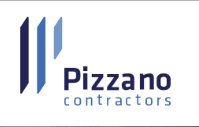Tariffs Are Here. How General Contractors Can Navigate Rising Materials Costs To Keep Projects Moving

Like many industries, commercial real estate hasn’t been immune to the impacts of the new tariffs implemented by the Trump administration, especially in the construction sector. As of March 12, steel and aluminum imports are subject to 25% tariffs — a move made to “protect America’s critical steel and aluminum industries, which have been harmed by unfair trade practices and global excess capacity,” according to the White House.
These tariffs have the potential to raise costs for project materials, which can prolong lead times, thereby risking delays on construction projects.
While general contractors can take steps during preconstruction to find creative procurement solutions, they need to prioritize communication with clients, relaying any relevant information as it relates to price changes, said Will Pizzano, director of preconstruction at general contracting company Pizzano Contractors.
Having been active in the Washington, D.C., Maryland and Virginia region for more than 60 years, Pizzano Contractors is no stranger to weathering periods of economic uncertainty. Pizzano’s advice for brokers, architects, project managers and consultants is to emphasize to clients that while construction teams aren’t in control of price increases, they will always be communicative and responsive about any changes that arise.
Pizzano’s longevity is rooted in its adaptability and a deep commitment to its clients. The firm recognizes that proactive communication, flexibility and a client-first approach are essential to navigating changing market conditions, Pizzano said.
One way for contractors to keep this promise is to stay in touch with the trades and suppliers to ensure that they have the most up-to-date information on the cost of materials.
“You need to make sure that people understand that there is volatility and that we’re doing our best to stay current about where these increases are headed and develop strategies to approach them,” he said. “General contractors that are able to do that effectively will be successful during this time.”
Keeping everyone in the loop about how these changes can impact their projects can go a long way for a business’s relationships with its clients as well as its subcontractors, he said.
“The way that you respond and persevere in volatile times shouldn’t change,” Pizzano said. “At the end of the day, construction is a relationship business. You have to take care of your clients and your subcontractors by being clear and honest about what’s going on and being a good business partner.”
Contractors can also get ahead of potential cost increases by locking in materials and prices in advance when possible through procurement. Pizzano said that waiting would risk the material potentially becoming more expensive in the future.
“I encourage all of our clients to be decisive,” he said. “If we get to a point and we know what material or equipment we need for the project, we need to get it ordered to lock in that cost.”
General contractors may additionally use value engineering — an analysis to try and get the most value for a project at the lowest cost — to work around the tariffs, he said. One way is to try and find alternative or equivalent material to the ones that are being tariffed.
He said they may also consider turning to U.S.-based suppliers or manufacturers to find these alternatives. However, those avenues may be overburdened with orders, resulting in increased lead times.
Another strategy is for contractors to include at least a 5% tariff contingency in their agreement that would provide a safeguard from future price increases while being upfront with clients for future projects about the possibility of price increases.
“The tariffs are an evolving situation,” Pizzano said. “The way that we’re trying to value-engineer projects right now in this environment is different from what we were doing even three months ago. We’re trying to figure out a way to circumvent this increased tariff cost.”
He predicted that even if tariffs decrease or go away completely, material prices will likely not go down. However, despite whatever turns come their way, general contractors need to be able to pivot and act accordingly, he said.
“Having gone through the pandemic, we know that these costs aren’t going to return to previous levels,” he said. “The reality of the situation is that we are a capitalist society. It’s going to be a challenge for general contractors to work around these costs, but it’s important to focus on building relationships with your team and clear communications with clients.”
Despite these challenges, Pizzano remains optimistic about the future of the market and is looking forward to tackling the firm's upcoming projects with a client-driven, solutions-oriented approach, he said.
This article was produced in collaboration between Studio B and Pizzano Contractors. Bisnow news staff was not involved in the production of this content.
Studio B is Bisnow’s in-house content and design studio. To learn more about how Studio B can help your team, reach out to studio@bisnow.com.

